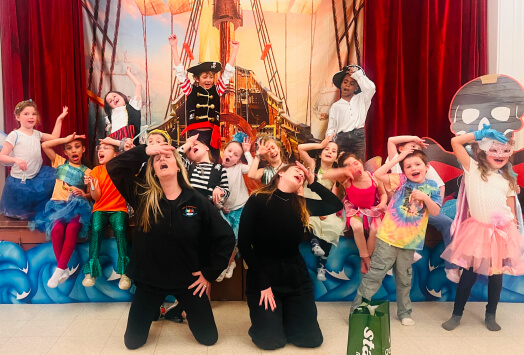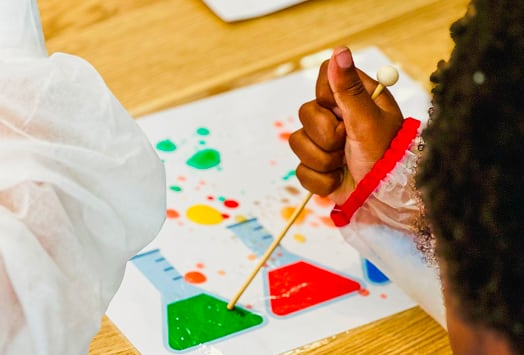Whether you are teaching theatre to kids and using improv games as part of your lessons or you are starting a children’s activity business teaching improv, having a wide variety of improv games for kids under your belt is an important part of planning. The improv games that you choose should be appropriate for the age and level of the students you are teaching and easy to learn.
Improv for kids: Benefits
Knowing the benefits of improv for kids is helpful when you plan your lesson plans, teach your classes, and market your activities to families. Interviews show that millennial parents want to sign their children up for experiences that will be fun, but also help their children develop and grow.
When children participate in improv activities, they learn how to think on their feet, work as a team, and use their imagination. It can also help children, both neurotypical and atypical, feel more in touch with their emotions, practice empathy, and gain confidence socially, according to research.
Improv can help children gain confidence in and out of the classroom. When they learn to trust their gut and stop second guessing themselves, children can become the best versions of themselves. Improv classes are a great way to help them practice this type of thinking.

Improv games for kids
Teaching improv to younger children should be all about fun. Explain the concept to your students and play improv games that will help them practice these skills with as little pressure as possible.
- Freeze. This is a great warmup game. It’s very simple: all of the children move around until one stops. When the others notice, they stop, too. When everyone is frozen, the game is over. This game helps students pay attention and work together as a team.
- Cross differently. This is another warmup game that gets your students moving and thinking. Gather in a circle and then each student must cross through in a different way (running, skipping, mooing, etc). It’s a fun game that helps your students realize it’s ok to look silly.
- One word stories. Have your students stand in a circle. Then, start with one student saying one word. The student to their left then says the next word in the sentence and so on until they have told a complete story. Once you have done this successfully, you can make it harder by tapping students randomly to go next instead of going in an order.
- Historical talk show. Ask your students to research a figure from history. Then, each student will take turns standing up in front of the class “as” that person. The rest of the class has to ask them questions about their lives and the student must answer as their historical figure, often making up responses on the spot if they don’t know.
- Prop bag. In this game, students choose a prop out of a bag and then demonstrate using it in an original and different way. For example, if they pull out a banana, they can use it as a phone or a boomerang. The goal is to practice quick thinking. Plus, children find it hilarious!

Improv lesson plan template
You might think that teaching improv requires less organization than teaching STEM, for example, because it is more active. That is not the case! Any time you teach a class, you should write a lesson plan so that you stay on track with time and content.
When you are teaching improv to children, we recommend using scaffolding in your lessons. Scaffolding is defined as “a variety of instructional techniques used to move students progressively toward stronger understanding and, ultimately, greater independence in the learning process” by the Glossary of Education Reform. When teaching improv, scaffolding can be offering constructive feedback and suggestions after the game or exercise finishes.
Use our editable improv lesson plan template to help you stay organized during your classes!
Get our editable improv lesson plan template
We hope that this guide has provided inspiration for your improv games and lesson plans. If you are a children’s activity provider and you are looking for guidance on managing and running your business, the team at Sawyer is here to help.
With our suite of tools, like custom forms to record allergies and t-shirt sizes, flexible payment options like gift cards and installment plans, and seamless scheduling and registration on any device, Sawyer saves business owners 28 hours per month. If you are ready to spend less time on admin and more time doing more of what you love, see how Sawyer can help with a free trial or demo.





















.png)












.avif)
.avif)
.avif)
.avif)




